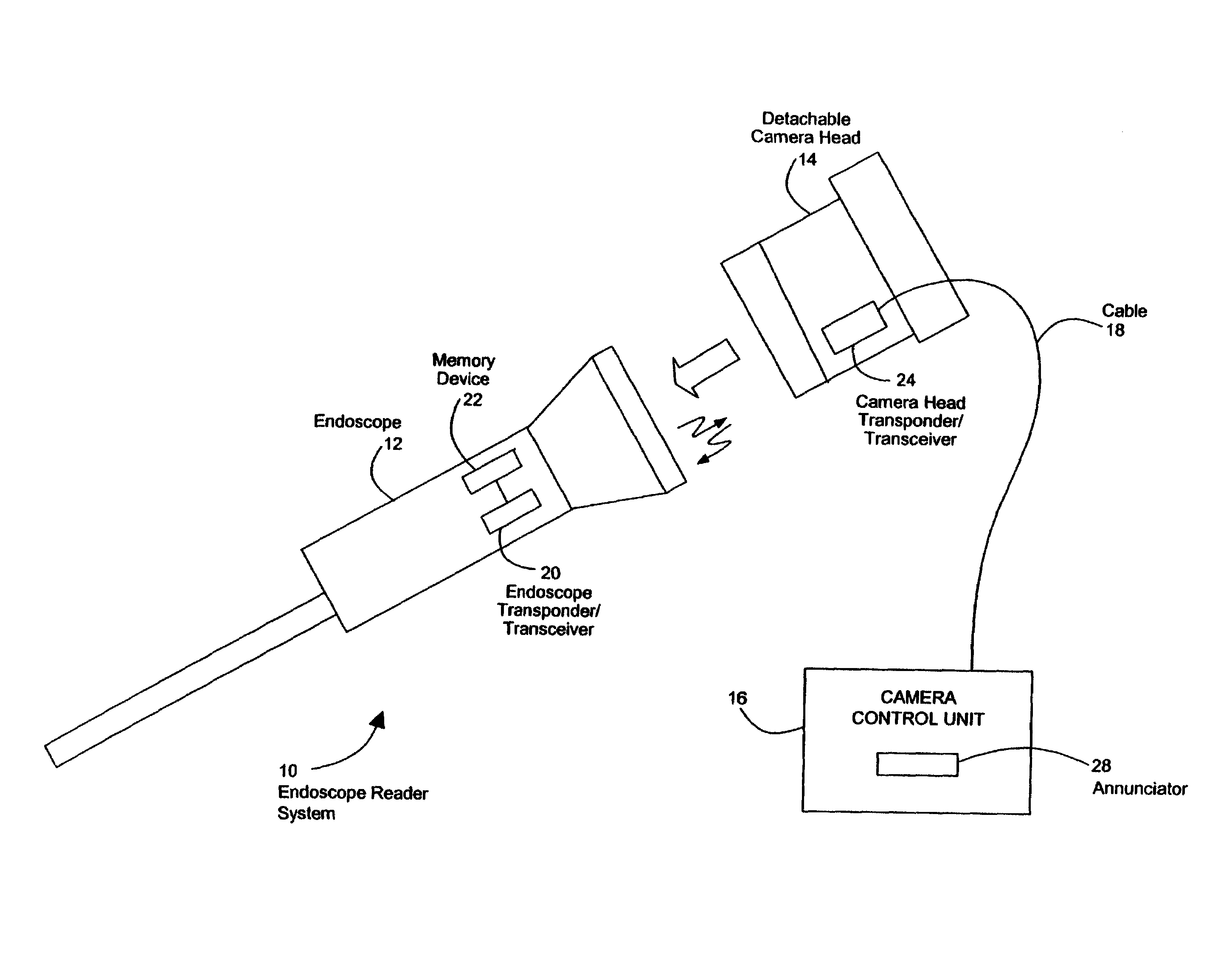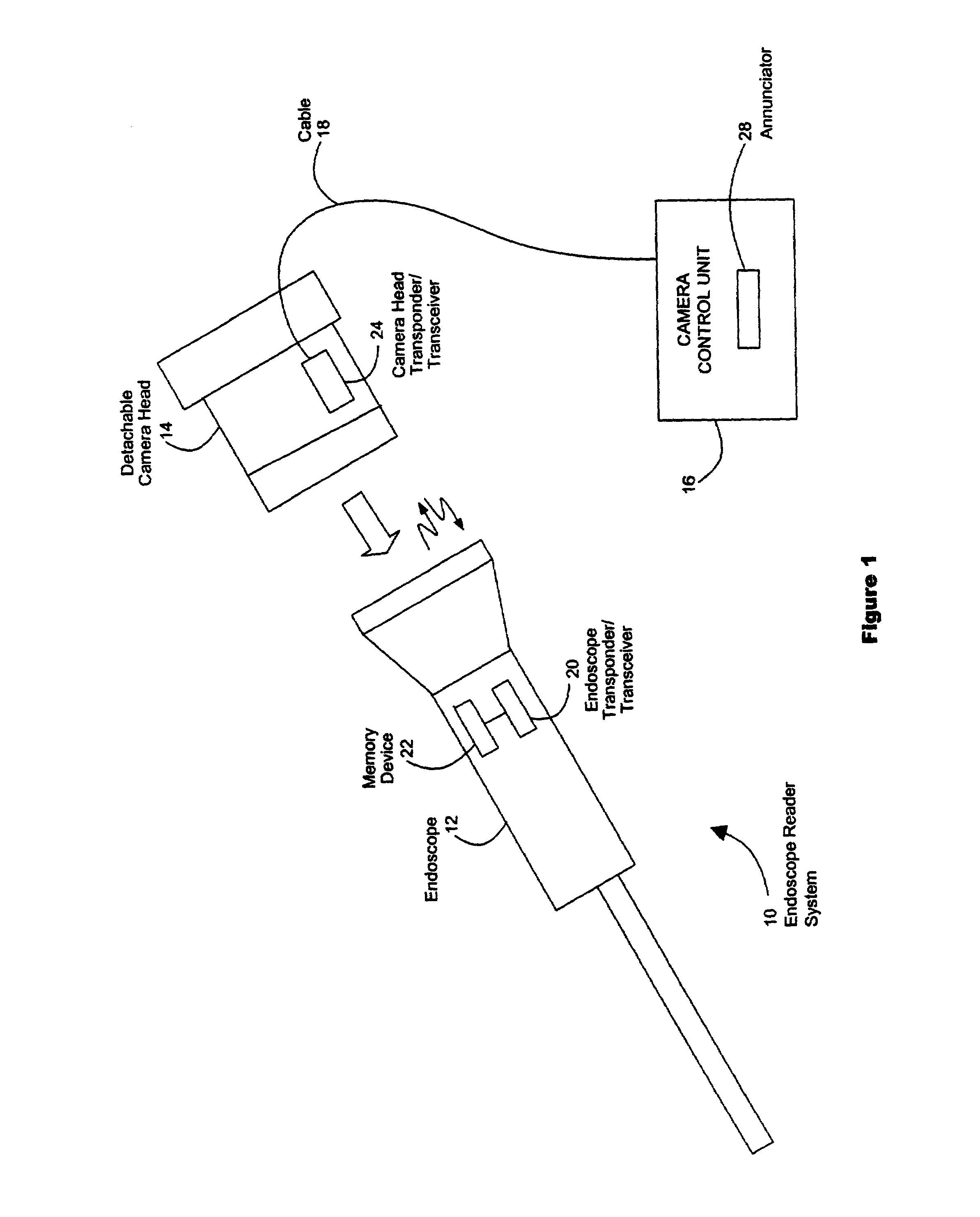Endoscope reader
a technology of endoscope and reader, which is applied in the field of endoscopic video camera systems, can solve the problems of ineffective assuring the level of scrutiny required for medical equipment, laborious and inaccurate simple inventory control and sign-out sheets, and inability to use unauthorized repair services in medical facilities
- Summary
- Abstract
- Description
- Claims
- Application Information
AI Technical Summary
Benefits of technology
Problems solved by technology
Method used
Image
Examples
Embodiment Construction
[0029]Referring to FIG. 1, an endoscopic system 10 for storing and transmitting electronic representations of endoscope characteristics is shown. In accordance with one advantageous embodiment, an endoscope transponder / transceiver 20 is mounted on an endoscope 12 and communicates with a camera head transponder / transceiver 24 mounted on a detachable camera head 14. Endoscope transponder / transceiver 20 and camera head transponder / transceiver 24 may be any type of short-range transponder / transceiver devices well known to those of ordinary skill in the art. Endoscope transponder / transceiver 20 and camera head transponder / transceiver 24 are set so that each is capable of both sending and receiving radio frequency signals to and from the other.
[0030]Endoscope transponder / transceiver 20 is coupled to a memory device 22. Memory device 22 is capable of storing and providing electronic representations of parameters of endoscope 12 to endoscope transponder / transceiver 20. Memory device 22 may ...
PUM
 Login to View More
Login to View More Abstract
Description
Claims
Application Information
 Login to View More
Login to View More - R&D
- Intellectual Property
- Life Sciences
- Materials
- Tech Scout
- Unparalleled Data Quality
- Higher Quality Content
- 60% Fewer Hallucinations
Browse by: Latest US Patents, China's latest patents, Technical Efficacy Thesaurus, Application Domain, Technology Topic, Popular Technical Reports.
© 2025 PatSnap. All rights reserved.Legal|Privacy policy|Modern Slavery Act Transparency Statement|Sitemap|About US| Contact US: help@patsnap.com



